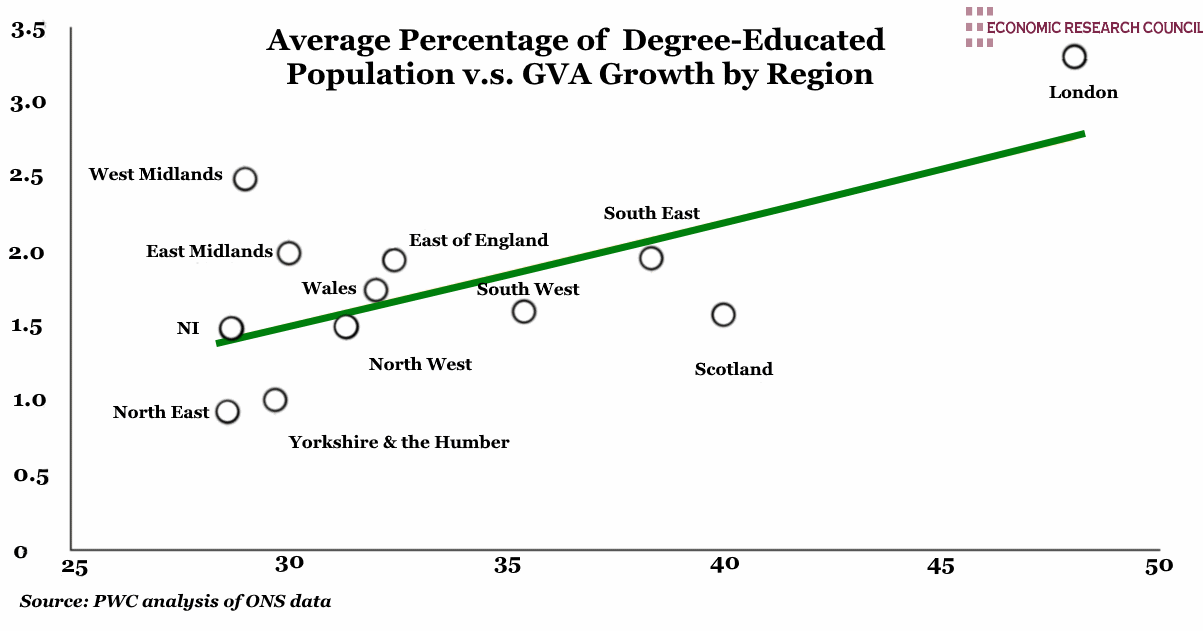
Summary
This chart reflects a general trend that is unsurprising, with regions home to the highest proportion of graduates or equivalently-educated individuals showing the highest average annual growth in GVA. There are anomalies, however, with Scotland’s position likely due to its provision of free undergraduate degrees and the success of Aberdeen, Edinburgh and Glasgow being depressed by more sparsely-populated areas. The West, and indeed East, Midlands have enjoyed a significant boost in GVA despite low graduate levels in the period indicated. This may be related to the concentration of cities in the regions (Milton Keynes, Birmingham and Nottingham) and their proximity to London, from which many businesses have moved to escape the high costs. It is worth noting that Wales, the North West and North East regions house a high proportion of public sector workers who, relative to private sector, are more likely to be degree educated. In the years displayed on the chart, many public sector workers have been subject to government cuts and may have left their jobs/regions in pursuit of alternative employment following the financial crisis.
What does the chart show?
Along the bottom axis, this chart plots regions of the UK by the percentage of population aged 16 to 64 that possess a degree, its equivalent or higher. This data is averaged for the years between 2010 and 2017. The regions are plotted along the left hand axis by annual GVA growth also averaged for the years between 2010 and 2017.
Why is the chart interesting?
It is worth noting that Wales, the North West and North East regions house a high proportion of public sector workers who, relative to private sector, are more likely to be degree educated. In the years displayed on the chart, many public sector workers may have left their regions in pursuit of alternative employment following governments cuts after the financial crisis. To varying extents, London has led the UK’s economic growth since the 1990s as a product of financial deregulation which not only boosted GVA but also served to attract more degree-educated workers. The future of this trend for London is in doubt, with mounting housing and transport costs a potential obstruction as well as other regions’ burgeoning tech/start-up attraction. Although Brexit uncertainty is nation-wide, London as a centre for financial services is particularly exposed. Many attribute increased GVA growth across all regions to increased net immigration since the turn of the millennium, which has tempered the decline in manufacturing in regions such as Wales and the North. The influx of new workers, falling unemployment and improvements in the skills of young people following the extension of mandatory education have all contribute to growth in GVA. The report from which the data is drawn asserts that ‘ the challenge for policy-makers will be to invest in infrastructure, innovation and skills across all the regions, harnessing the benefits of London’s success for the good of the country as a whole.’.
Week 19, 2019

